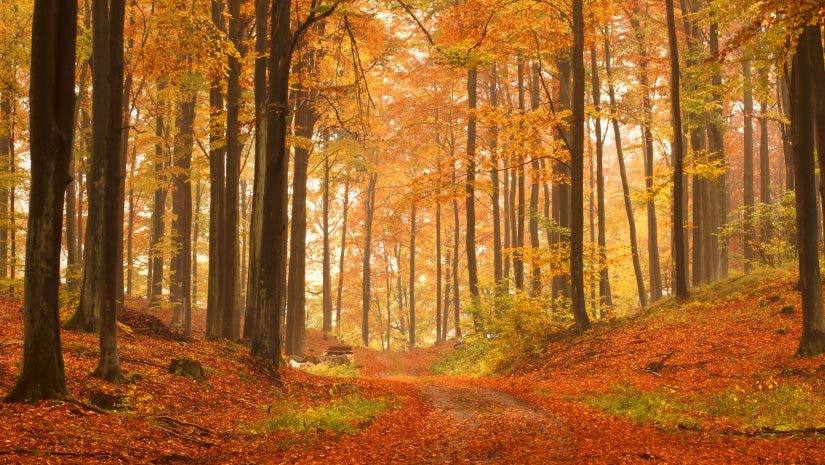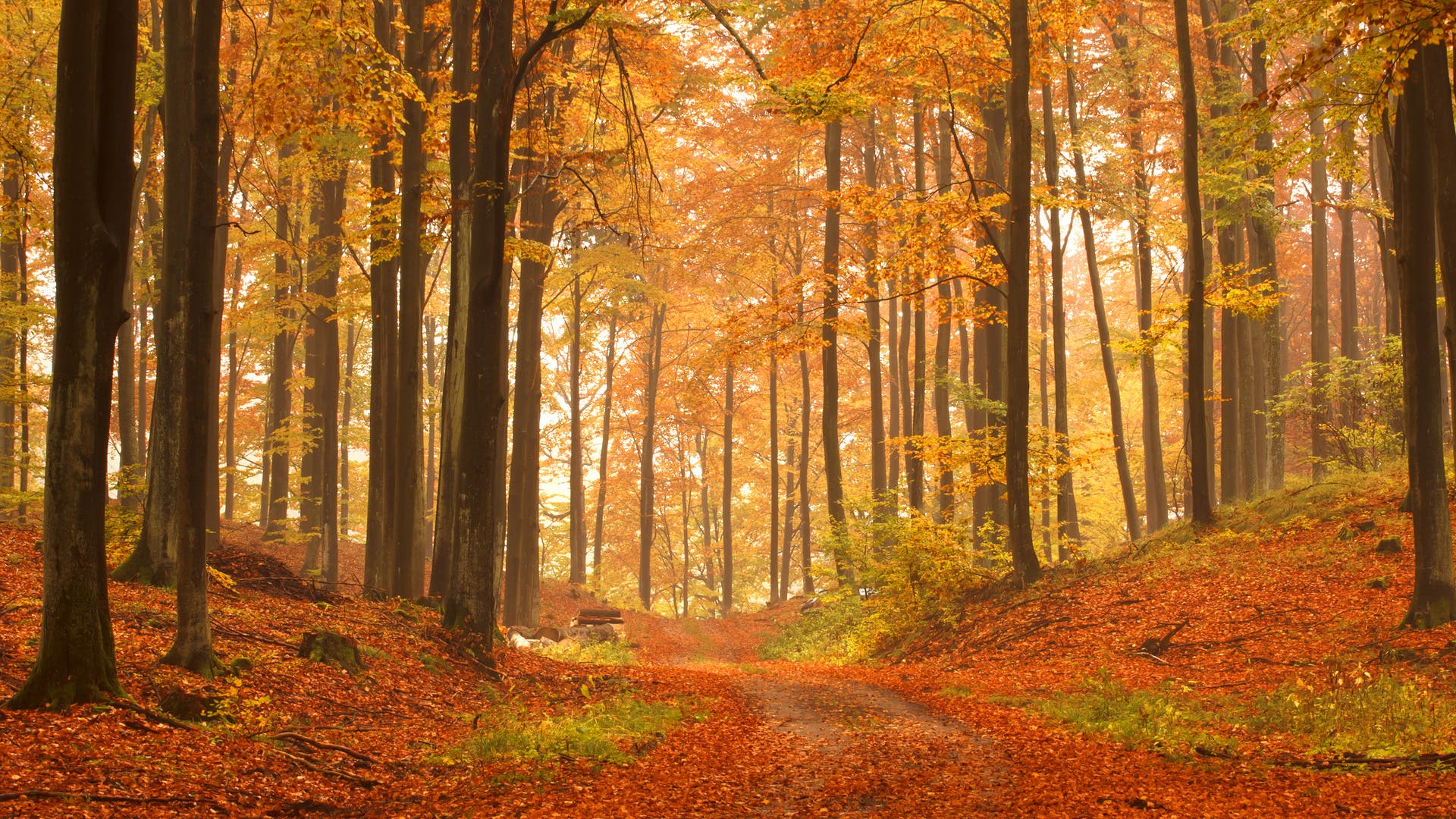Fall is upon us! The colors are gorgeous- deeply saturated hues of gold, orange, red and yellow are an outdoor photographer’s dream . This time of the year, however, festively lures out photographers of all genres to capture its beauty.
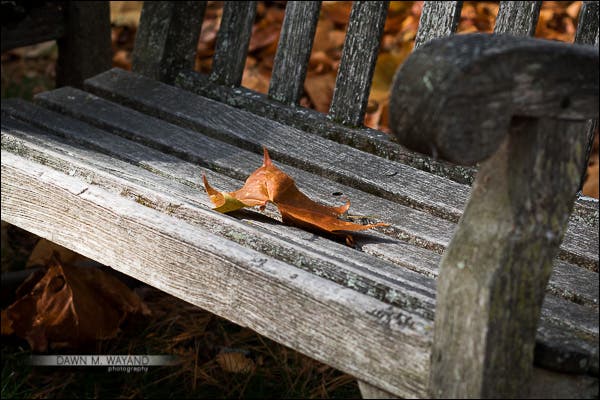
Park bench at Storm King Art Center.
Shot with a Canon 85mm f/1.8 lens.
I usually go away each year for a fall getaway – last year it was the Storm King Art Center for the day (a beautiful outdoor larger-than-life abstract sculpture exhibition laid out upon over 500 acres of fields) and this year I drove up to Montreal, Canada. On my way to Canada, I thought what fun it would be to share some of my tips for capturing some amazing fall photography.
So here they are! Grab a pen and paper, your camera and get inspired to create some great fall photography. Enjoy!
- Use a polarizer for richer colors. For fall foliage and landscapes, polarizers are a great tool to use to create richer colors during capture. Circular polarizers are especially useful because you can choose the level of intensity by rotating the filter on the lens. Polarizers are good for more than color saturation, they can eliminate glare from water and glass and can add contrast to an image (*think* dull to dramatic skies…)
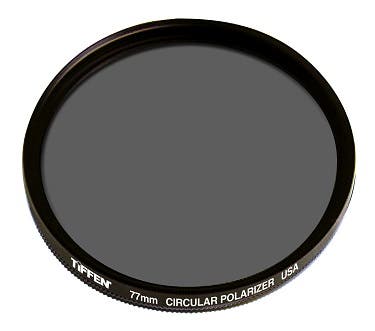
Tiffen 77mm Circular Polarizer
Image courtesy of the Tiffen website.
- Composition can sometimes make the image. There are many compositional guidelines available at your disposal to work into your photography. Here I chose the very popular “Rule of Thirds” for this single red leaf resting on a bed a green grass on a bright sunny day at Storm King Art Center. While some rules are made to be broken, this image might have worked with the leaf centered since it was a single leaf atop a bed of green grass with no other distractions, but I felt it a much stronger composition not dead-center.
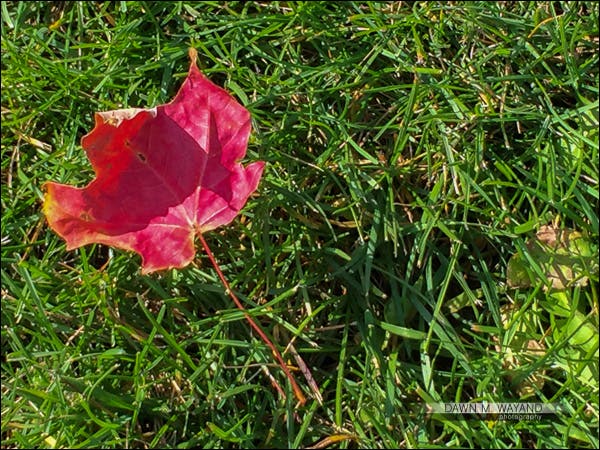
The leaf falls on the left vertical third of the image with the hole in the leaf also falling very close to the top third intersection line.
Shot with the iPhone 6.
- It’s “open season” for macro shots. Leaves are full of veins which photograph beautifully close up anytime but especially so when they are bursting with color. Even dry leaves have a nice texture that can make for an extraordinary photograph. The best way to capture a fall leaf without capturing your own shadow is to photograph it vertically instead of horizontally. Being the queen of Plexiglas, I found another good use for it: taping a leaf to a piece of Plexiglas, attaching the Plexiglas to a light stand by way of a reflector bracket and using a tripod to steady my camera for the shot against a white background. On the road? Try taping a leaf to your car window and shooting it using natural light.
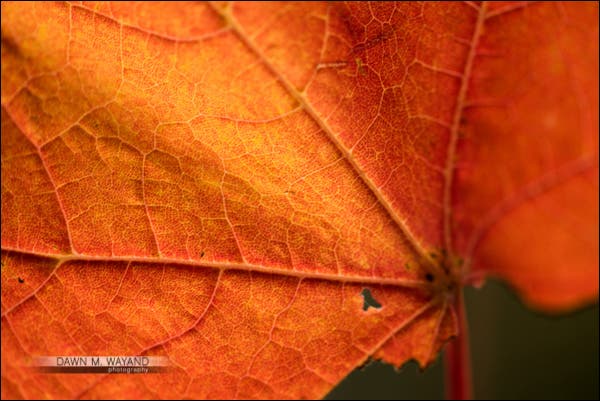
I shot this orangish-red leaf taped inside the window of a moving car on a highway to Montreal. Don’t worry, I wasn’t driving!!
Shot with a Nikon 105mm f/2.8 G ED VR Micro Lens.
- Fall’s not just about the leaves! Though it’s probably the most popular sign of fall, leaves are not the only objects to signal the season’s arrival. Look for things to capture like pumpkins, apples, berries and pies, etc., which can also represent the season.
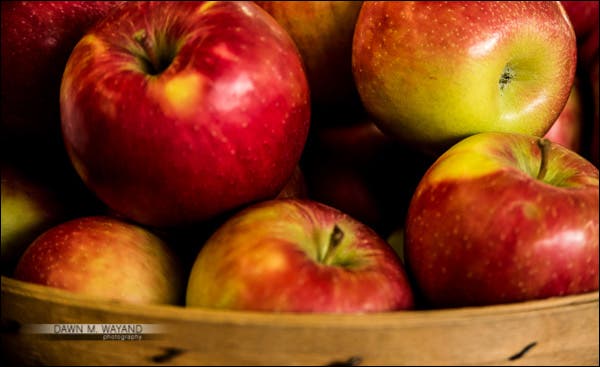
A barrel of apples.
Shot with a Nikon 70-200mm f/4 G ED AF-S VR Lens.
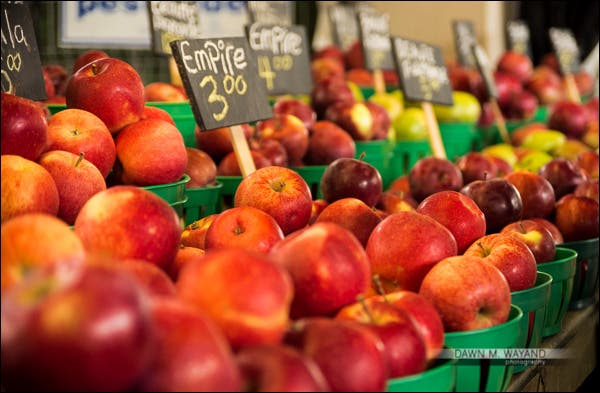
Apples put out at the Jean Talon Market in Montreal.
Shot with a Nikon 70-200mm f/4 G ED AF-S VR Lens.

Blueberries and raspberries make for great holiday pie fillers. They also make for great pictures.
Shot with a Nikon 70-200mm f/4 G ED AF-S VR Lens.
- Capture a playful, yet, captivating candid portrait. While leaves are inclusive here, the main subject are loved ones. Capturing a spur of the moment candid photo of friends and loved ones playing with leaves in the yard can make for a fun and memorable picture. Below, I set my camera with a fisheye lens inside a stack of fall leaves at Storm King and set the timer to capture these children playing just in the nick of time as they ran past me.
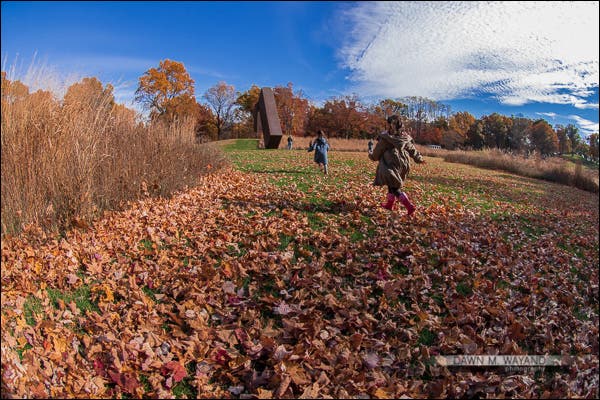
Children at play at the Storm King Art Center last Fall.
Shot with a Canon 8-15mm Fisheye lens.
Straightforward, intentional portraits with colorful trees and leaves in the background also work well for simple outdoor portraits. A great prime lens used wide open can make busy colorful backgrounds look painterly and dreamy with color.

The background here was a bit busy, but using a wide aperture makes it much more appealing.
Shot with a Zeiss 100mm f/2 lens.
- Play with reflections. While this can also work with Spring blooms, photographing a group of colorful trees behind a body a still water make a beautiful mirror image of the scene.
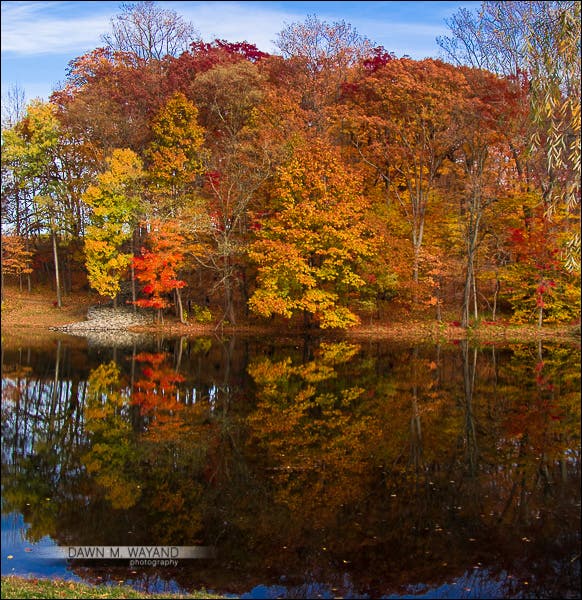
Mirroring of fall-colored trees in a body of still water.
Shot with a Canon 8-15mm Fisheye lens.
Consider taking it a step further by stirring up the water and photographing only the water to create an abstract effect!
- Change your perspective! Yes, you can bend down and shoot colorful leaves on the ground, but try getting on the ground and shooting upward. A tree full of colorful leaves plus a blue sky (and possibly white, puffy clouds!) can yield a beautiful colorful abstract photograph too.
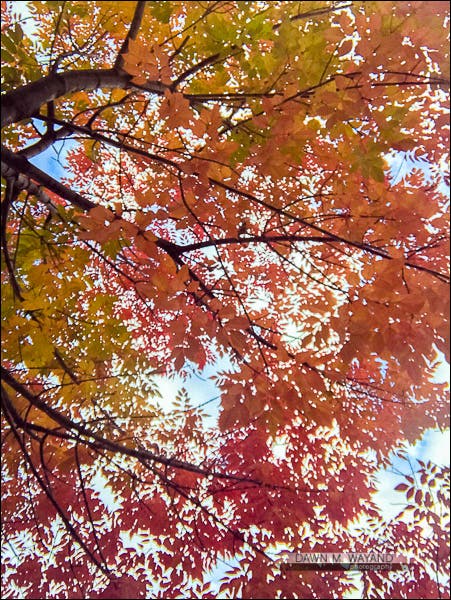
Shoot upward.
Shot with the iPhone 7.
Take it a step further by adding a foreground object or leading line into the mix.
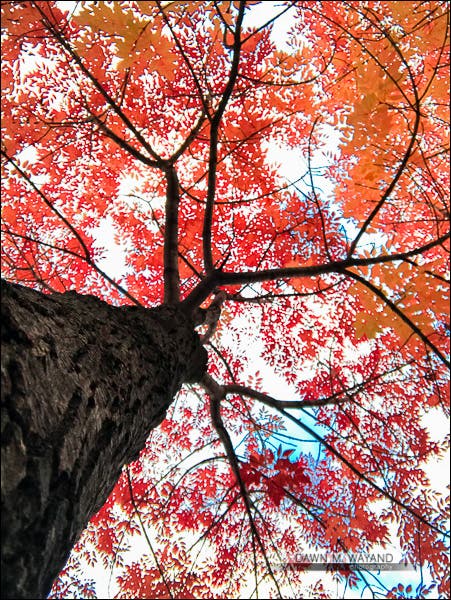
Adding in the tree’s trunk gives it more contrast and adds a new dimension to this abstract image.
Shot with the iPhone 7.
- Set the scene. Use fallen leaves, acorns and other objects to set up a seasonal picture. Fallen objects such as these have endless potential for reuse and repositioning for still-life shots.
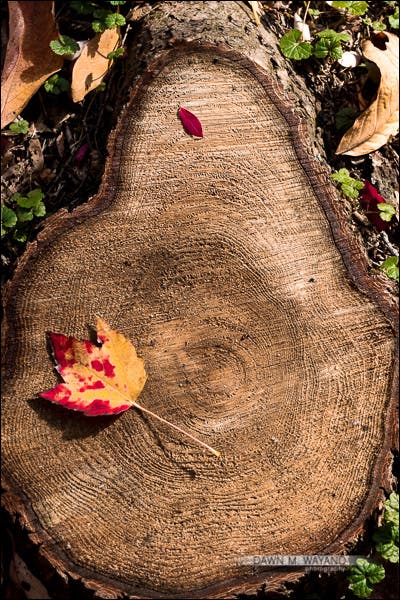
Beautiful detail in this tree stump was made festively Fall by using a multicolor leaf.
Shot with a Canon 85mm f/1.8 lens.
- Create fall abstracts. Set your shutter to a slow shutter speed, focus on a part of a colorful tree and slowly pan your camera left to right and back or up and down and back.
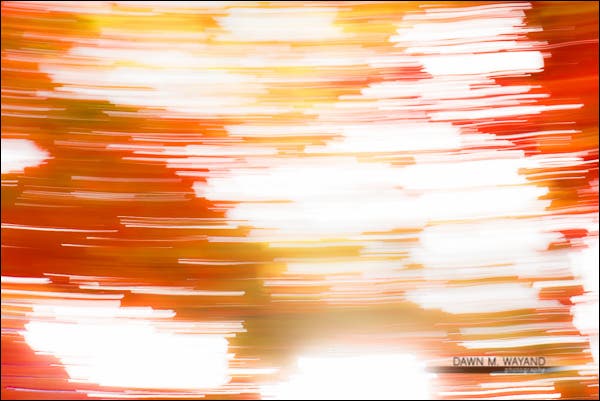
Here I panned left to right on a colorful tree at ⅕ of a sec.
Shot with a Nikon 105mm f/2.8 G ED VR Micro Lens.
- Timing is everything. While you can really shoot any time of the day and get great shots with the right techniques and equipment, some of the best times to shoot fall colors are at sunrise and sunset. Reds and yellows become far richer in color when bathed in the warm glow of sunrise and sunset rays.
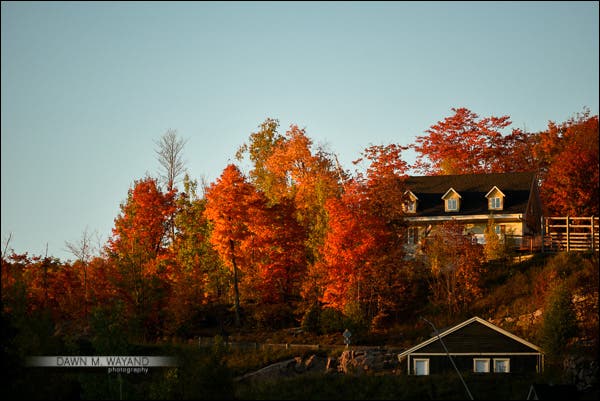
I shot this right as the sun set at Mont-Tremblant. Deep reds, oranges and yellows become prominent.
Shot with a Nikon 70-200mm f/4 G ED AF-S VR Lens.
- Zoom in on interesting landscapes. Whether you are on a flat plain of land or high up on a mountain, take that beautiful wide angle shot, but don’t forget to also reach for your telephoto lens and capture the details and color far away.
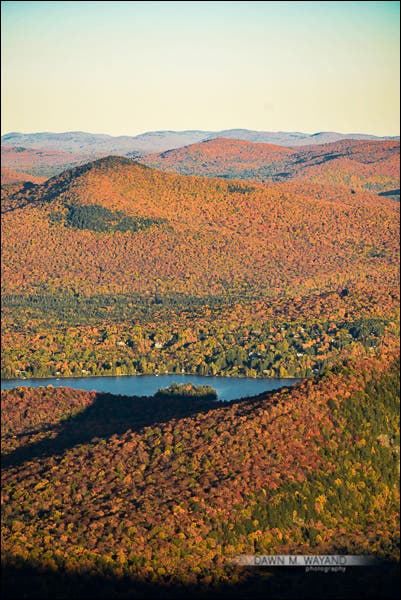
This is a zoomed image from the highest mountain in Quebec – Mont Tremblant.
Shot with a Nikon 200-500mm f/5.6E ED VR Zoom Lens.
- Take the scenic route. When fall arrives, it can be seen just about anywhere. On the road? This is a good time to take the scenic route. Covered bridges, small creeks, barns and fields of corn nestled among a fall landscape makes for a much more interesting photo. Stop often, get out and shoot.
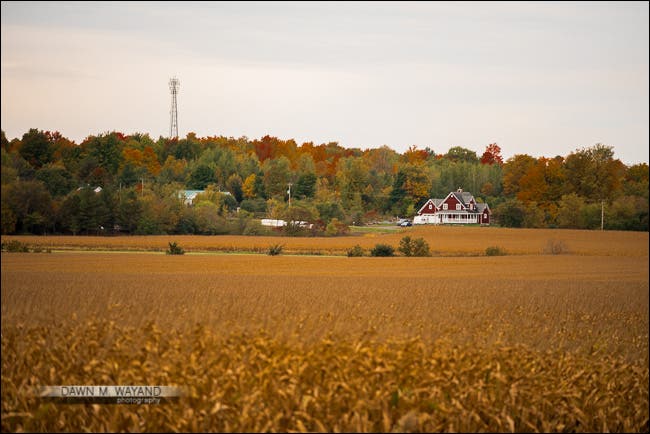
A quick stop just inside the Canadian border on a back road yielded a red home perched above a field of corn with a Fall colored background right around sunset.
Shot with a Nikon 70-200mm f/4 G ED AF-S VR Lens.
- Create drama, contrast and/or boost your colors in post. Was the sun too bright, washing some of the colors out of the foliage and you forgot your filters? You can play with white balance settings to warm an image or have a bit of fun in Lightroom after the capture.
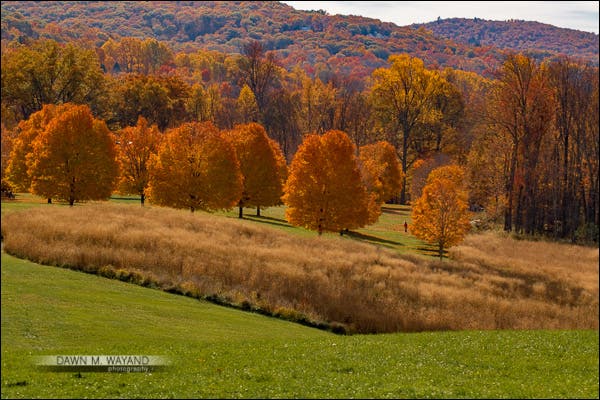
A little vibrancy, luminance and dehazing makes this a nice fall landscape.
Shot with a Canon 85mm f/1.8 lens.
- Look for complimentary colors and contrasts. Combine a complimentary color with blue skies or a bold color with the ground (or below: dark gravel). Colors appear richer and more pronounced.
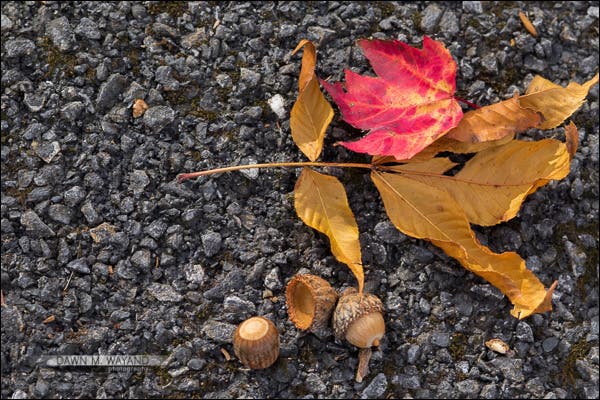
Adding a hint of color (and found acorns) to this dark gravel makes for simple fall shot.
Shot with a Canon 85mm f/1.8 lens.
- Play with different exposures. Slightly overexpose for brighter, almost washed out color and slightly underexpose for deeper color. Take different exposures of the same image and see which exposure you like best afterward. This can also be done in post-production, but if you choose to do it this way, either get the correct exposure or slightly underexpose the image as bringing information back into a completely overexposed image is nearly impossible.
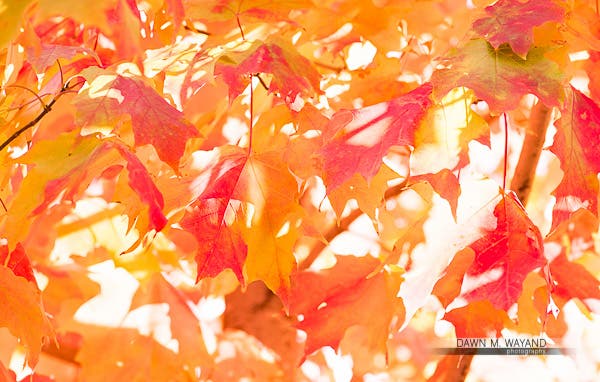
In this case, overexposing this image makes it into another cool fall abstract.
Shot with a Nikon 105mm f/2.8 G ED VR Micro Lens.
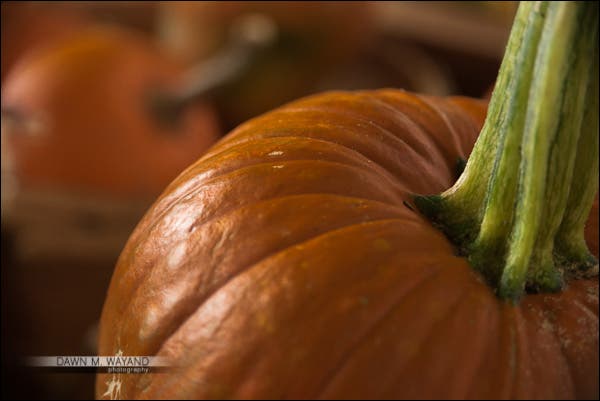
Underexposing this image deepened the colors.
Shot with a Nikon 28-105mm lens.
- Entertain different lens choices. If you have a collection of lenses or choose to rent lenses, bring them all along with you on your fall outing. You would be surprised how many ways you can photograph the same subject with different lens!
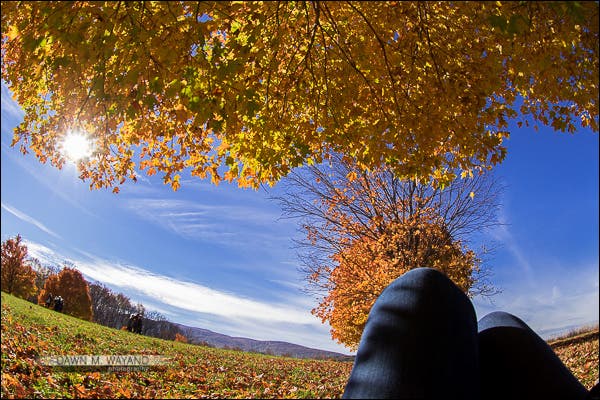
Enjoying a lazy day under a tree at Storm King Art Center.
Shot with a Canon 8-15mm Fisheye lens.
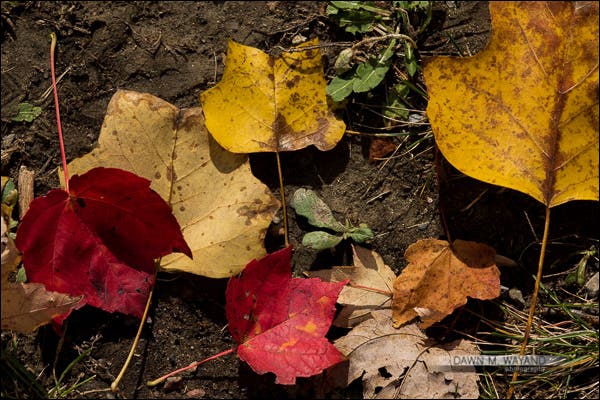
Details, detail, details – around sunset…
Shot with a Zeiss 100mm f/2 lens.
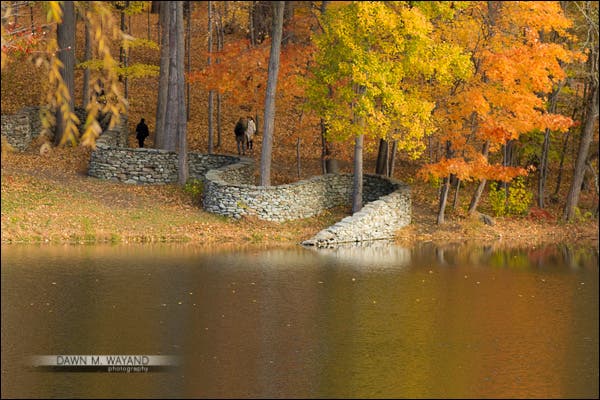
Beautiful stone wall curving into the pond at Storm King Art Center.
Shot with a Zeiss 100mm f/2 lens.
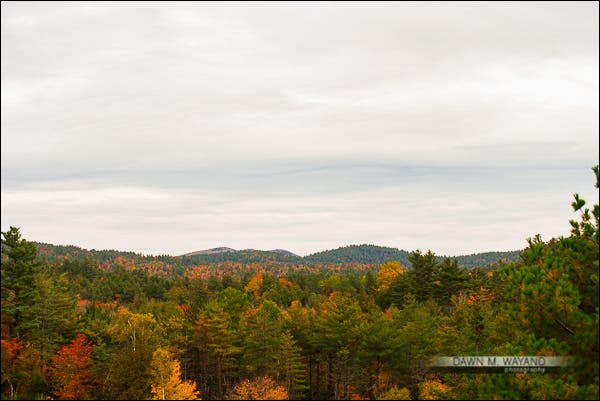
First sightings of fall foliage on our way to Canada.
Shot with a Nikon 70-200mm f/4 G ED AF-S VR Lens.
- Be patient, aware and pick your moments. Open your eyes and be aware of your surroundings. Anticipate moments. Seek the perfect setting, set up your tripod and camera and wait for the right moment.
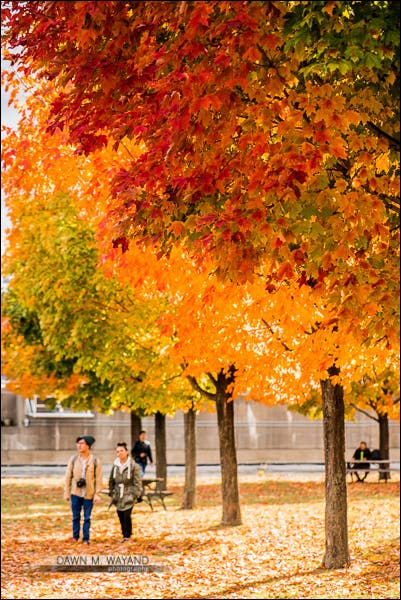
A painterly fall scene of a random couple strolling in the park.
Shot with a Nikon 105mm f/2.8 G ED VR Micro Lens.
- Record your fall journey in motion. Many cameras nowadays, as well as smartphones, have video capabilities. Record your journey on the road by securing your camera or phone on the dashboard (or have someone else drive) as you take a drive on a beautiful fall afternoon.
- Use the camera you have. Don’t have a camera yet? Smartphones, especially the iPhone 7 and 7+ can take some pretty spectacular images too! Besides the images below, several images above were also created with either the iPhone 6 or iPhone 7.
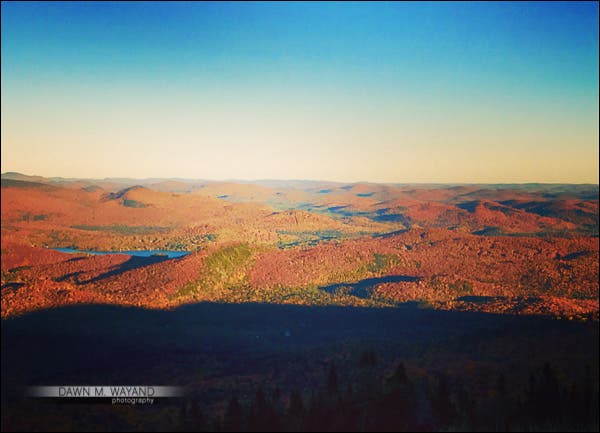
Landscape shot from Mont-Tremblant in Quebec.
Shot with the iPhone 7.
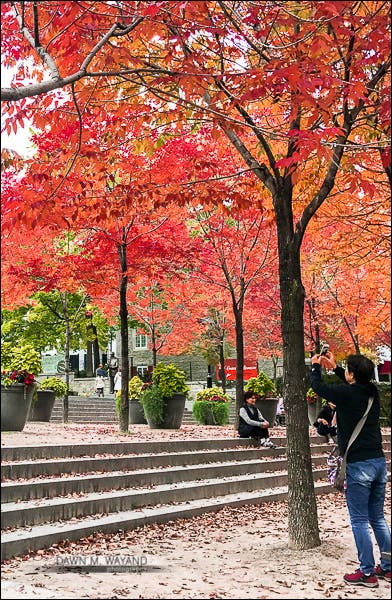
He has the right idea…
Shot and edited with Lightroom Mobile on the iPhone 7.
These are just a few fun and interesting ways to capture some striking fall photos. Enjoy your fall season this year and take advantage of the beauty it bestows – get out there and create some amazing images. Feel free to share some of your own fun and creative fall photography tips here for all to learn and apply as everyone steps out into this beautiful season to capture the essence of fall.
